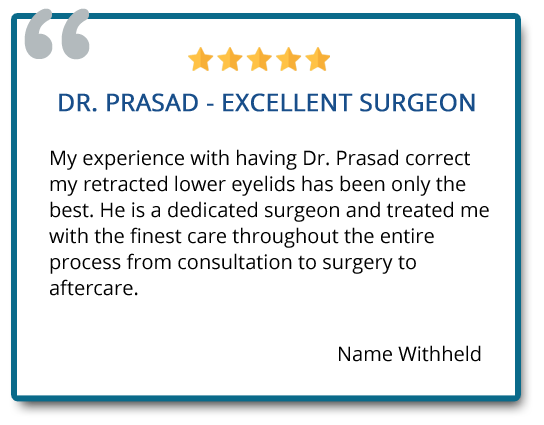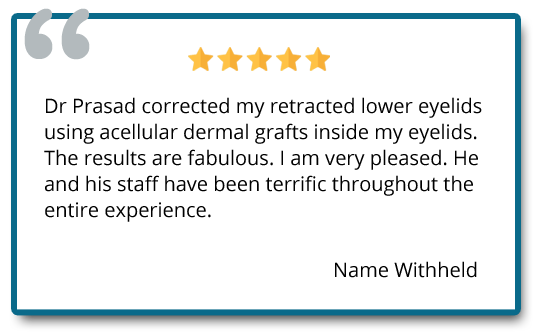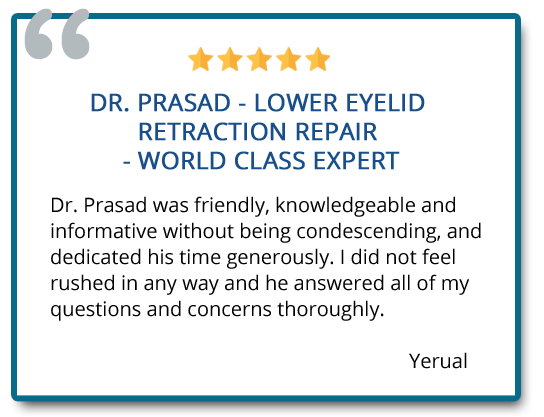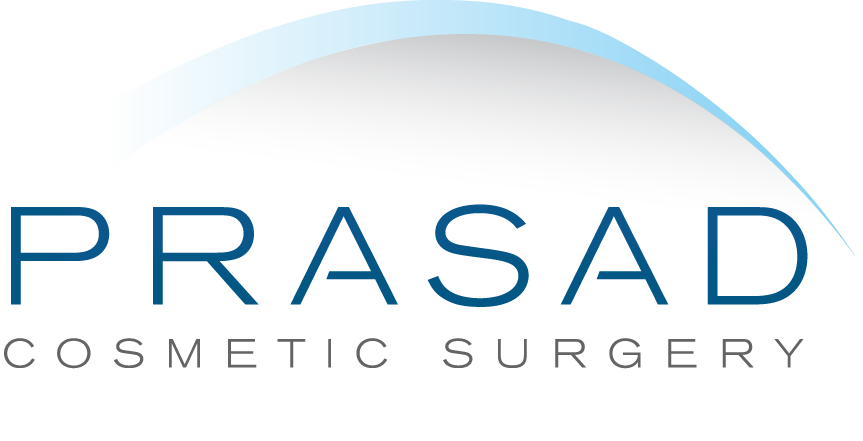Schedule Your Consultation with Dr. Prasad Here
- Home
- About Dr. Prasad
- Face & Eyes
Eyelifts
- Eyelid Surgery
- Eye lift Before and After Photos
- Asian Eyelid Surgery
- Upper Eyelid Surgery
- Upper Eyelid Hollow / Lower Brow Hollowing
- Under Eye Bag Surgery
- Eyelid Ptosis Surgery
- Transconjunctival Blepharoplasty
- Under Eye Fillers
- Eyelid Surgery Revision Specialist
- Thyroid Eye Disease
- Tear Trough Implants
- Eye Lift Questions and Answers
- Body
- Injectables
- Laser
- Hair Restoration
- Photos
- Hair Restoration Before and After Photos
- Eye lift Before and After Photos
- Upper Blepharoplasty Before and After
- Ptosis Surgery Before And After
- Facelift Before and After Photos
- Lip Enhancement Before and After Photos
- Under Eye Filler Before and After
- Blepharoplasty Before and After
- Lower Blepharoplasty Before and After Photos
- Eyelid Surgery Before and After
- Double Eyelid Surgery Before and After
- Contact Us
- Home
- About Dr. Prasad
- Face & Eyes
Eyelifts
- Eyelid Surgery
- Eye lift Before and After Photos
- Asian Eyelid Surgery
- Upper Eyelid Surgery
- Upper Eyelid Hollow / Lower Brow Hollowing
- Under Eye Bag Surgery
- Eyelid Ptosis Surgery
- Transconjunctival Blepharoplasty
- Under Eye Fillers
- Eyelid Surgery Revision Specialist
- Thyroid Eye Disease
- Tear Trough Implants
- Eye Lift Questions and Answers
- Body
- Injectables
- Laser
- Hair Restoration
- Photos
- Hair Restoration Before and After Photos
- Eye lift Before and After Photos
- Upper Blepharoplasty Before and After
- Ptosis Surgery Before And After
- Facelift Before and After Photos
- Lip Enhancement Before and After Photos
- Under Eye Filler Before and After
- Blepharoplasty Before and After
- Lower Blepharoplasty Before and After Photos
- Eyelid Surgery Before and After
- Double Eyelid Surgery Before and After
- Contact Us
Revision Eyelid Surgery Specialist/ Revision Blepharoplasty
With over 30 years expertise in oculoplastic surgery, Dr. Prasad is a trusted eyelid surgery revision specialist. Dr. Prasad is sought around the globe for repair and restoration of eyelid surgery complications.
Dr. Prasad is renowned for revision eyelid surgery procedures, such as lower eyelid retraction, upper blepharoplasty repair, revision double eyelid surgery, and ectropion.
Dr. Prasad performs specialty eyelid surgery such as eyelid ptosis correction, which is often misdiagnosed in general plastic surgery.
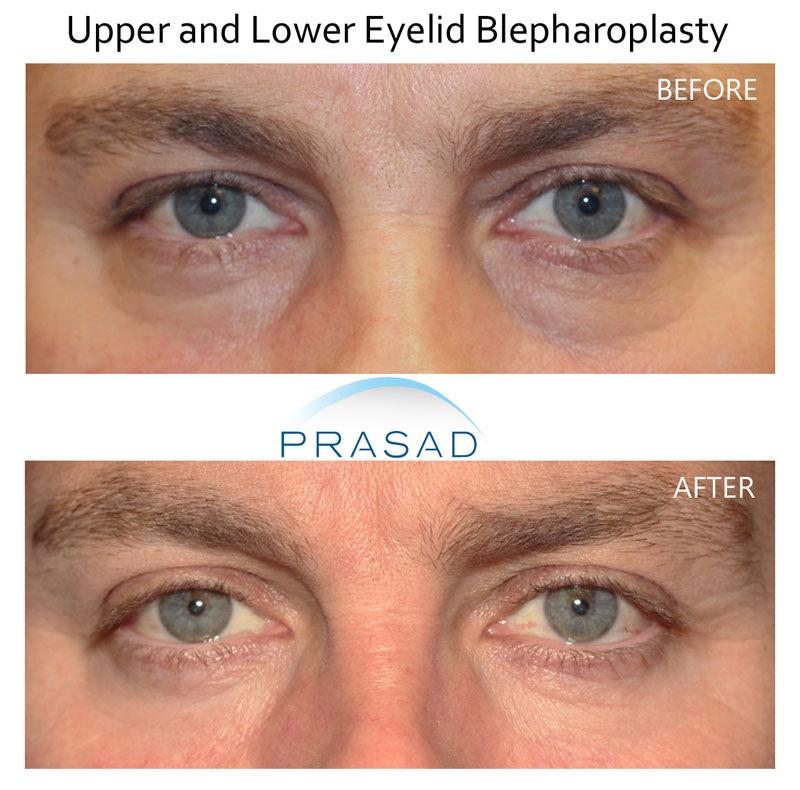
Blepharoplasty combined with Artistry with Precision
It can be argued that eyelid surgery is one of the most difficult areas of cosmetic surgery. Millimeters can spell the difference between successful surgery and a surgical complication. An artistic eye, a steady hand, and extensive knowledge of this area are critical to a successful procedure.
Eyelid skin is thinnest skin in the body at about half a millimeter in thickness, which makes surgery of this delicate area challenging.
The eyelid support structures and fine muscles, and how they affect the anatomy of the eye area adds another set of variables which can impact your cosmetic results. Eyelid surgery is performed very close to the eye which also adds a unique risk when compared to other cosmetic procedures.
How should a surgeon approach eyelid surgery revision and complications?
Dr. Amiya Prasad has a unique style to eyelid complication and revision surgery that gives him a unique position amongst Oculoplastic Surgeons.
In addition to his training in Oculoplastic Surgery, Dr. Prasad trained in Facial Plastic Surgery as well as Body, Breast and Extremity Surgery, earning him Board Certification in Cosmetic Surgery from The American Board of Cosmetic Surgery.
Dr. Prasad brings to Oculoplastic Surgery a certain perspective and approach by applying principles from surgical procedures which 99% of Oculoplastic Surgeons do not perform.
For example, Dr. Prasad’s innovations in the use of stem cell-based regenerative technology, which he performs during facelift surgery and non-surgical hair restoration (TrichoStem® Hair Regeneration), is used routinely in his eyelid complication or revision surgery procedures to maximize the results.
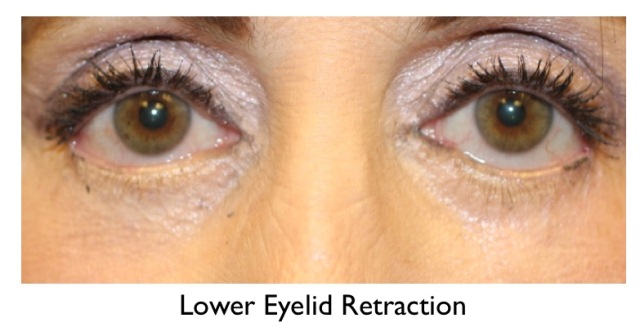
Common Problems with Lower Blepharoplasty
Eye bag removal surgery (lower blepharoplasty) is one of the most common cosmetic surgery procedures performed by a wide range of cosmetic and plastic surgeons. The lower eyelid is a complex structure which protects the lower part of the eye and plays an important role in eye lubrication.
Lower eyelid retraction is more likely avoided in the hands of an eyelid specialist who understands the support structure when removing and sculpting the fat that causes eye bags, and can perform procedures to prevent this complication from happening.
What are the common errors that can lead to eyelid retraction?
- Eyelid Skin Removal
- Transconjunctival Eye Bag Removal
- Ectropion
What is eyelid skin removal?
A common procedure to treat puffy eye bags is called transcutaneous blepharoplasty wherein an incision is made below the eyelashes to remove and sculpt the fat.
This approach to lower eyelid surgery is preferred by many plastic and cosmetic surgeons who don’t specialize in eyelid surgery. As stated earlier, limited training in eyelid surgery leaves fewer options for the surgeon when performing lower eyelid surgery.
Eyelid skin is also often removed with this approach, which is where problems start. Wrinkled under eye skin is often mistaken by surgeons to be excess skin, which is not necessarily the case.
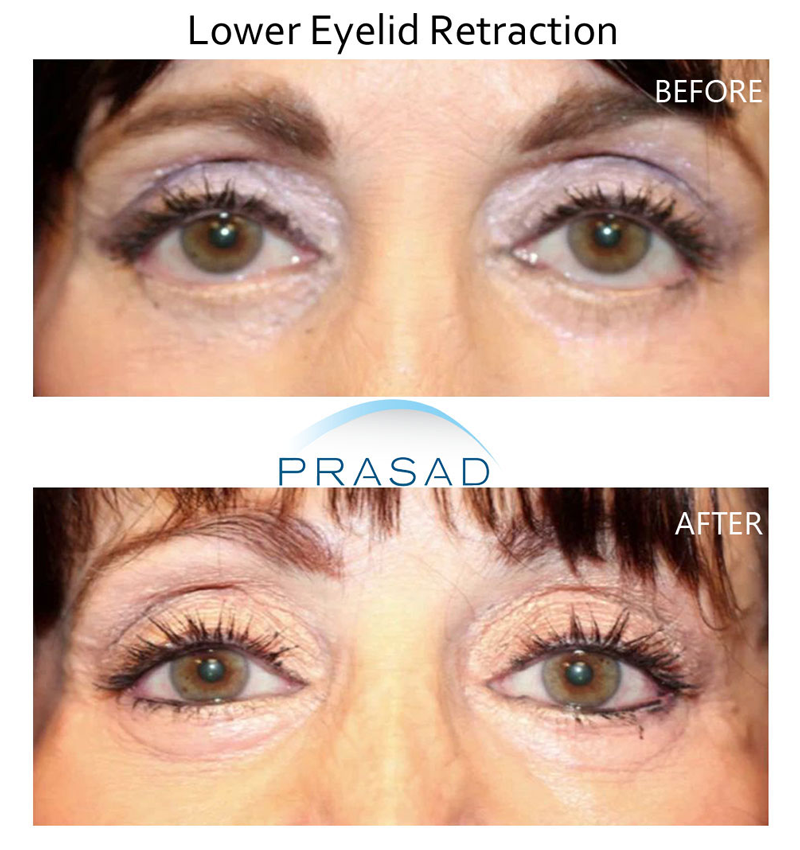
With successful eyelid surgery measured in millimeters, a tiny portion of eyelid skin removal can have a huge impact on the eyes. Too much skin removal can leave the eyes looking rounded and pulled down (lower eyelid retraction).
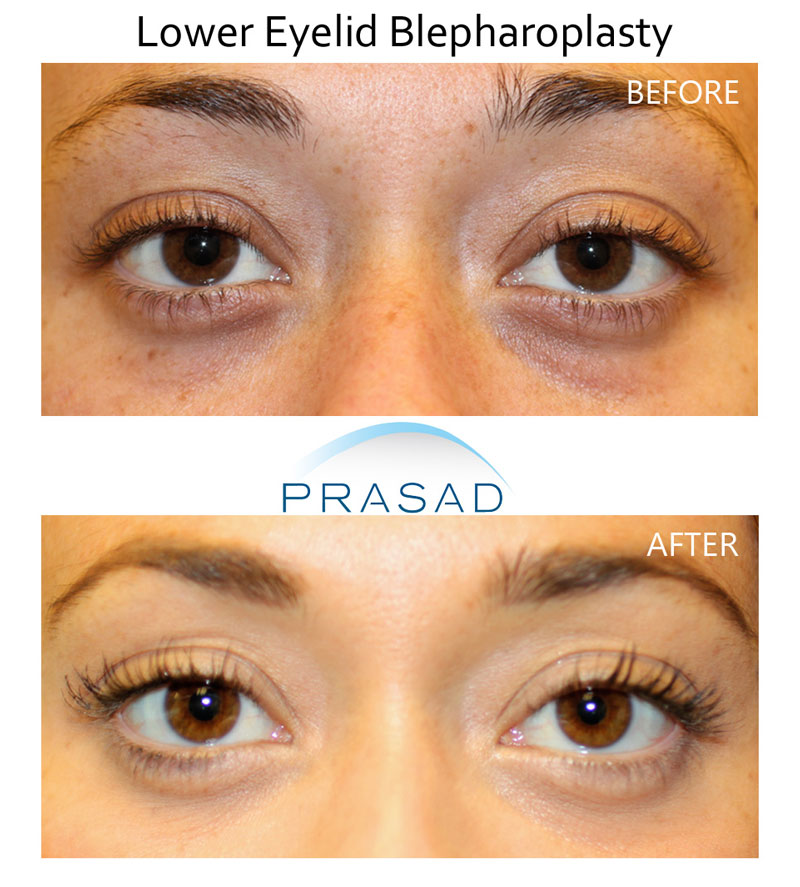
What is transconjunctival eye bag removal?
Transconjunctival blepharoplasty differs from transcutaneous blepharoplasty in such a way that no skin is removed and no external incision is made.
Non-specialized surgeons performing this procedure have been known to comprise the anatomical support of the lower eyelid and cause scarring which causes the eyelid to be pulled downward.
The entire procedure is done from the inside of the eyelid. The transconjunctival approach is generally superior to the transcutaneous approach because it preserves the support structures of the lower eyelid, keeping them intact.
What is ectropion?
Ectropion is related to lower eyelid retraction wherein the eyelids are pulled down due to surgery, but is taken a step further when lower eyelid actually becomes exposed by turning outward.
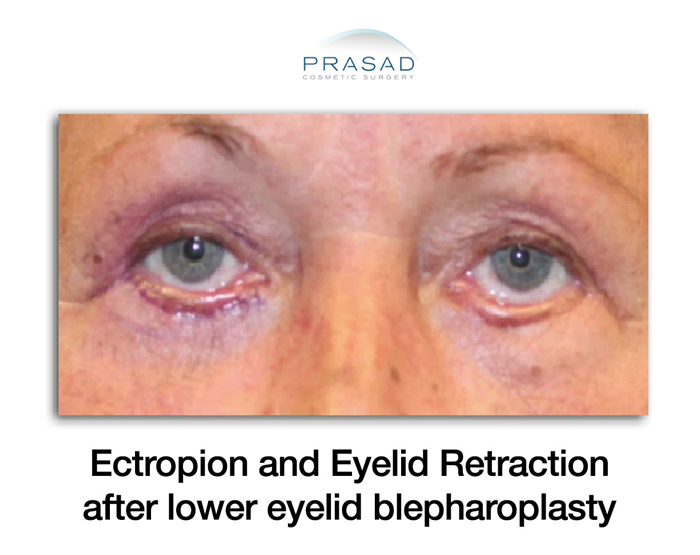
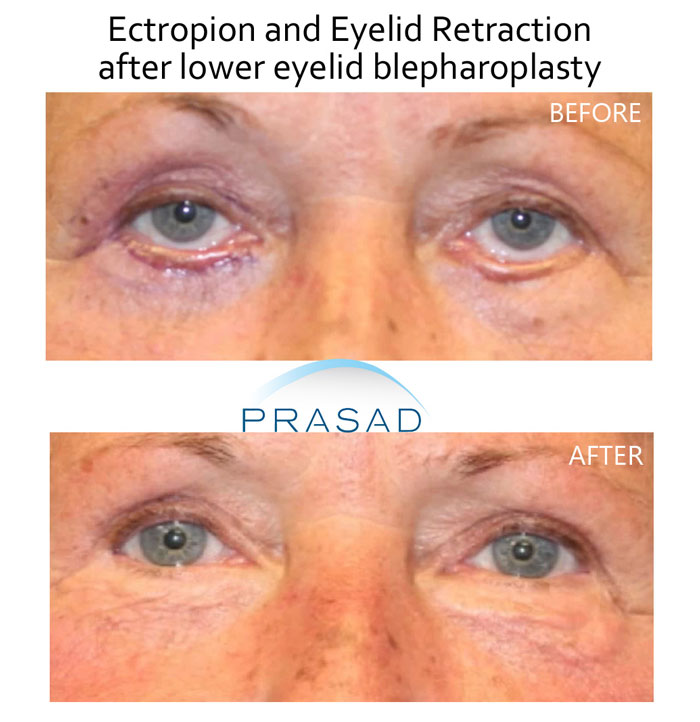
Solutions for Lower Eyelid Retraction and Ectropion
Replacing lost eyelid skin, and pulling up and anchoring delicate eyelid skin are difficult procedures. Dr. Prasad often performs grafts to build support and extra skin for the lower eyelids. These grafts may come from materials such as Enduragen, hard palate, and skin grafts.
- Canthopexy – tightening and suspending the lower eyelid. Small drill holes may be needed to anchor support called a drill hole canthopexy.
- Lateral Tarsal Strip – a procedure wherein the lower eyelid is separated from the upper eyelid with the objective of restoring the position of the lower eyelid and reinforcing the tone of the lower eyelid.
- Release of Lower Eyelid Retractors – the lower eyelid retractors are released through an incision to enable a more normal eyelid position. An eyelid spacer may be used to support the vertical postion of the lower eyelid.
- Posterior Lamellar Graft – The eyelid is composed of 3 layers. The posterior layer or lamella is the conjunctiva and lower eyelid retractors. A graft can be placed in this layer to restore eyelid position and function.
- Skin Graft – adding your own skin to the inside and outside of the eyelids to make up for skin lost from previous surgery.
- Cheek Lift – elevating the cheeks to bring up the position of the lower eyelids.
- Enduragen Graft – porcine acellular dermis matrix that is sterilized for human compatibility.
Specialized Eyelid Repair Surgeries
Upper Blepharoplasty Revision
Upper eyelid retraction also occurs when too much eyelid skin is excised or removed. Upper eyelid retraction can result in a constantly surprised look, and worse, leaves the eyes unable to close fully for sleep.
Upper eyelid retraction may require skin grafting, or grafts made up of temporalis fascia (taken from the scalp).
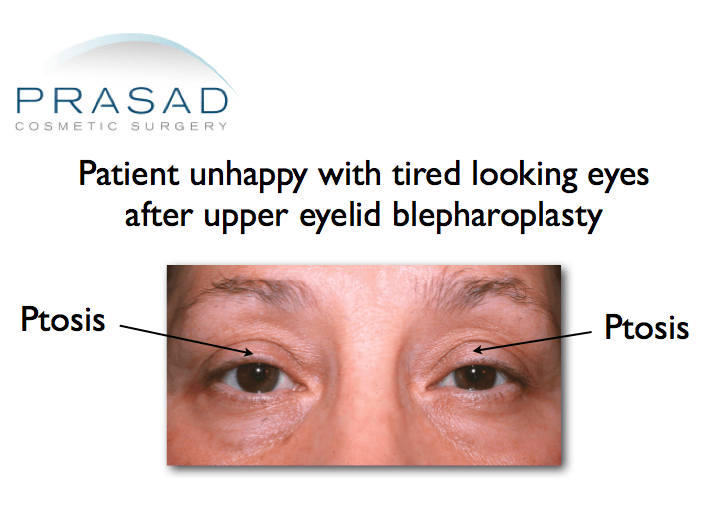
Misdiagnosed Ptosis Cases
Ptosis of the eyelids is often caused by a defect or stretching of the muscle that lifts the eyelids called the levator muscle. Ptosis is not only a cosmetic problem, but can impair vision, and even hinder the visual development of children who are born with the condition (congenital ptosis).
Correction of Ptosis Misdiagnosis
Restoration of lost upper eyelid skin can be done with skin grafting, if necessary, when eyelid closure is compromised. Ptosis correction surgery involves shortening or resectioning of the levator muscle (the muscle that lifts the upper eyelid). Ptosis correction surgery is an area of specialty for Oculofacial/Oculoplastic surgeons.
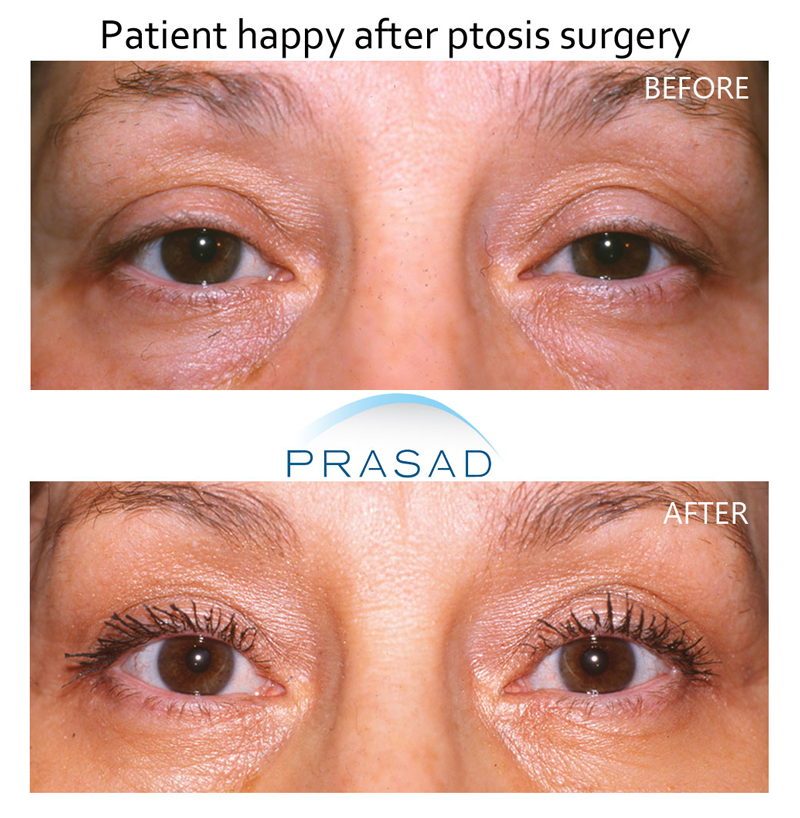
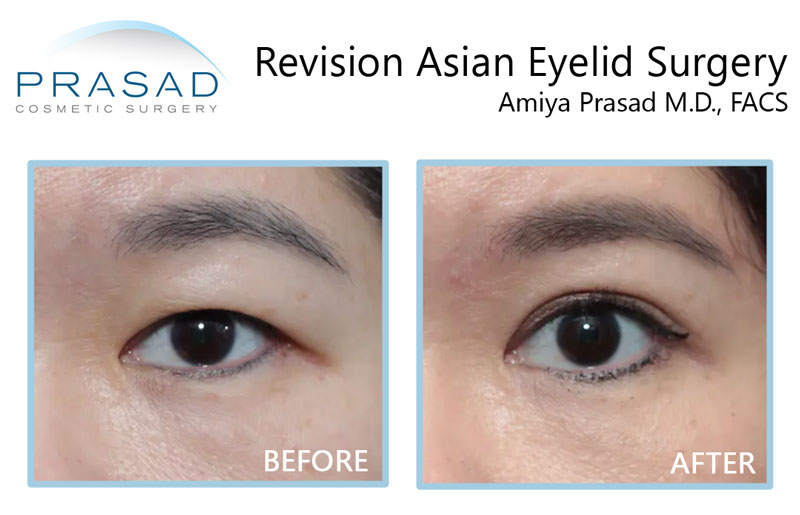
Hollow Upper Eyelids from Double Eyelid Surgery
Asian double eyelid surgery may need a revision when an eyelid crease isn’t achieved. This could be due to inadequate tension on the suture, excess fat preventing the connection between the skin and the levator muscle, or excess eyelid skin not addressed in the primary surgery prevents the crease from being visible. Strengthening the suture connection, carefully excising excess fat, and precisely trimming redundant eyelid skin may be needed in revision surgery for a deep, defined crease.
This enables an upper eyelid crease/fold to form. However, some surgeons may remove too much fat above the eyelids that can cause a hollowed look. Loss of fat above the upper eyelids can also occur naturally from volume loss due to aging.
The area of the sub brow where fat is removed has thicker skin than eyelid. Thicker skin is more appropriate for transferring/grafting of your own body fat to fill and provide volume for this hollow space.
However, due to the unpredictability of 30-70% of grafted fat being absorbed soon after fat transfer surgery, hyaluronic acid filler can be injected non-surgically to restore lost volume. Unlike grafted fat, hyaluronic acid filler does not require a blood supply for volume to be viable and stable, so it only takes one procedure for best results. If volume is still needed after the filler has settled about two weeks after treatment, a little more can be added in minutes, as there is no surgery required.
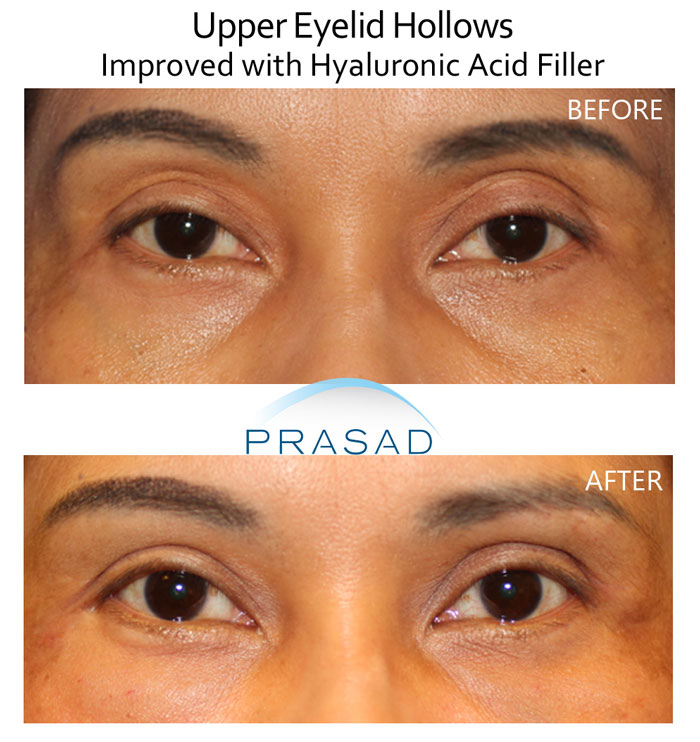
Revision Eyelid Surgery NYC and Long Island, New York
If you have any questions or want to schedule a consultation with Dr. Amiya Prasad fill up the form below or you may call any of our offices:
- Midtown Manhattan, New York City Office: (212) 265-8877
- Garden City, Long Island Office: (516) 742-4636
- Vienna, Virginia Office: (703) 356-1336 / (703) 821-2683
Appointment Request
Patient Reviews on Revision Eyelid Surgery

